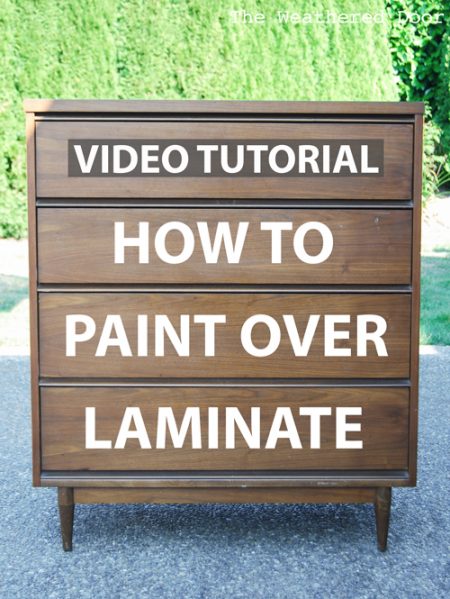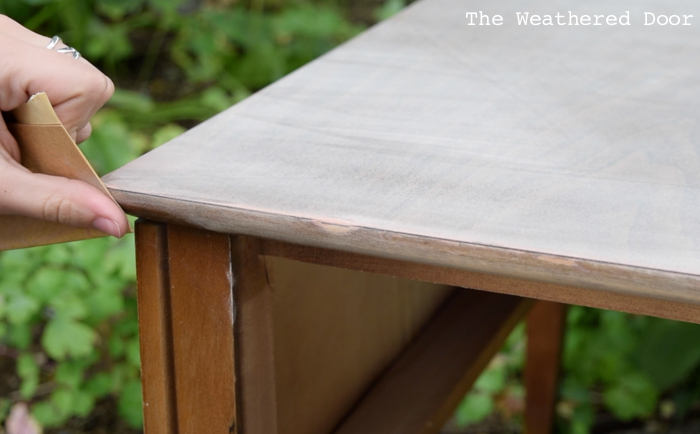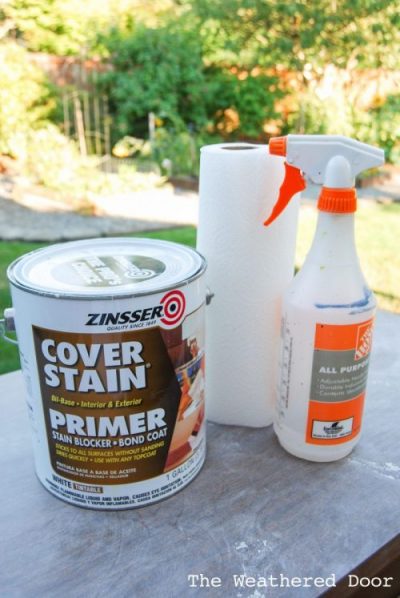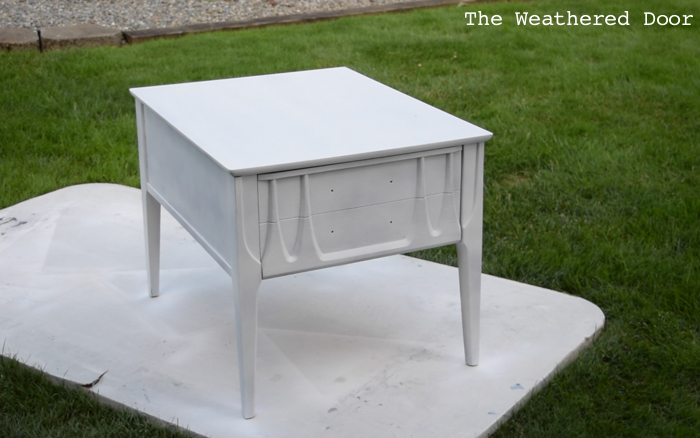Back in 2014 I wrote a post about my method for painting over laminate. I also explained why a piece of furniture with laminate is nothing to walk away from and can actually work in your benefit. You can read the original post here. It’s been a popular post and I wanted to create a video showing how to paint over laminate and share how this end table with a plastic drawer front and laminate top got a whole new updated look.
If you want to read the more thorough step-by-step process, click here.

How to Paint Over Laminate
- Sand with 150 grit sandpaper
- 2. Clean with TSP substitute wash + synthetic steel wool or scrub pad
- Wipe clean
- Prime with oil bonding primer
- Sand primer smooth
- Paint surface, if paint requires sealer, apply topcoat.

Laminate and plastic can be worrisome to paint for some people because it seems like a surface that paint would not stick to. Let me just tell you that it’s totally doable and a dated pieces can look amazing again. You can’t really tell that is was faux wood grain laminate when it’s painted correctly.
Since laminate is so durable it is usually pretty simple to paint over (there are hardly ever dings!). I do like to use a warm water + TSP substitute wash to help clean the surface and prepare it for paint. Using a fine scrub pad or synthetic steel wool really cleans the surface. It’s isn’t always necessary, but it really helps remove all the years of grime.

Sanding and primer are 2 very important parts painting over laminate or plastic. Using a primer meant for laminate/plastic that is a bond coat is important. My favorite is Zinsser Cover Stain. I prefer to spray it on to avoid the terrible texture that come with brushing and rolling. One dry I sand with a high grit sanding sponge before I paint, but the spray cans of primer are great. They make the priming process much

Next, the surface is ready for paint. You can use the type of paint you prefer. I use General Finishes acrylic milk paints and their high performance topcoats (I love the satin finish). Other times I spray on an oil paint that doesn’t require a sealer. For the table in the video used custom mix paint color made from General Finishes milk paint. I sprayed on 2 coats and then used GF’s high performance topcoat in satin.
I hope you found this video helpful. You can find all of my videos here.
-Reeves
Hi there. I love following your blog! Would this method apply to painting Ikea furniture pieces? I have heard they are not real wood under the laminate, but a composite wood of some sort, so not sure if this is a good option?
Hi Terri, I have not painted over ikea pieces, but this should still work. As long as you sand (and a liquid de-glosser may be a good idea) then prime with a bonding primer you should be fine. I know some ikea pieces are high gloss, polished laminate and I do not have experience with that.
I’ve been searching for a how to vid on this for weeks! I have some nasty old laminate wardrobes I’ve been dying to make-over, but I’ve been to afraid to get the paintbrushes out just in case I make an even bigger mess. Thanks for sharing!
I came across your blog at just the perfect time! I’m trying to pretty up my kitchen and had this idea to paint the small appliances (like the ugly black blender), but they’re all shiny plastic. I know that’s a little unusual, but nothing ventured… What grit sandpaper do you use to rough up plastic surfaces? And how important have you found that process to be?
Thanks so much for your super-informative (and eye candy filled) blog <3
What kind of paint can we use besides general finishes. Other brands and what kind
I’m new to Pinterest, your video was absolutely informational and easy to follow. Thank you soo much for making this so simple.
Hello! You seem to have a lot of experience here – have you ever tried a similar method for laminate/plastic and used gel stain instead of paint? I’d be curious how that turns out as I’m considering doing that for a desk soon.